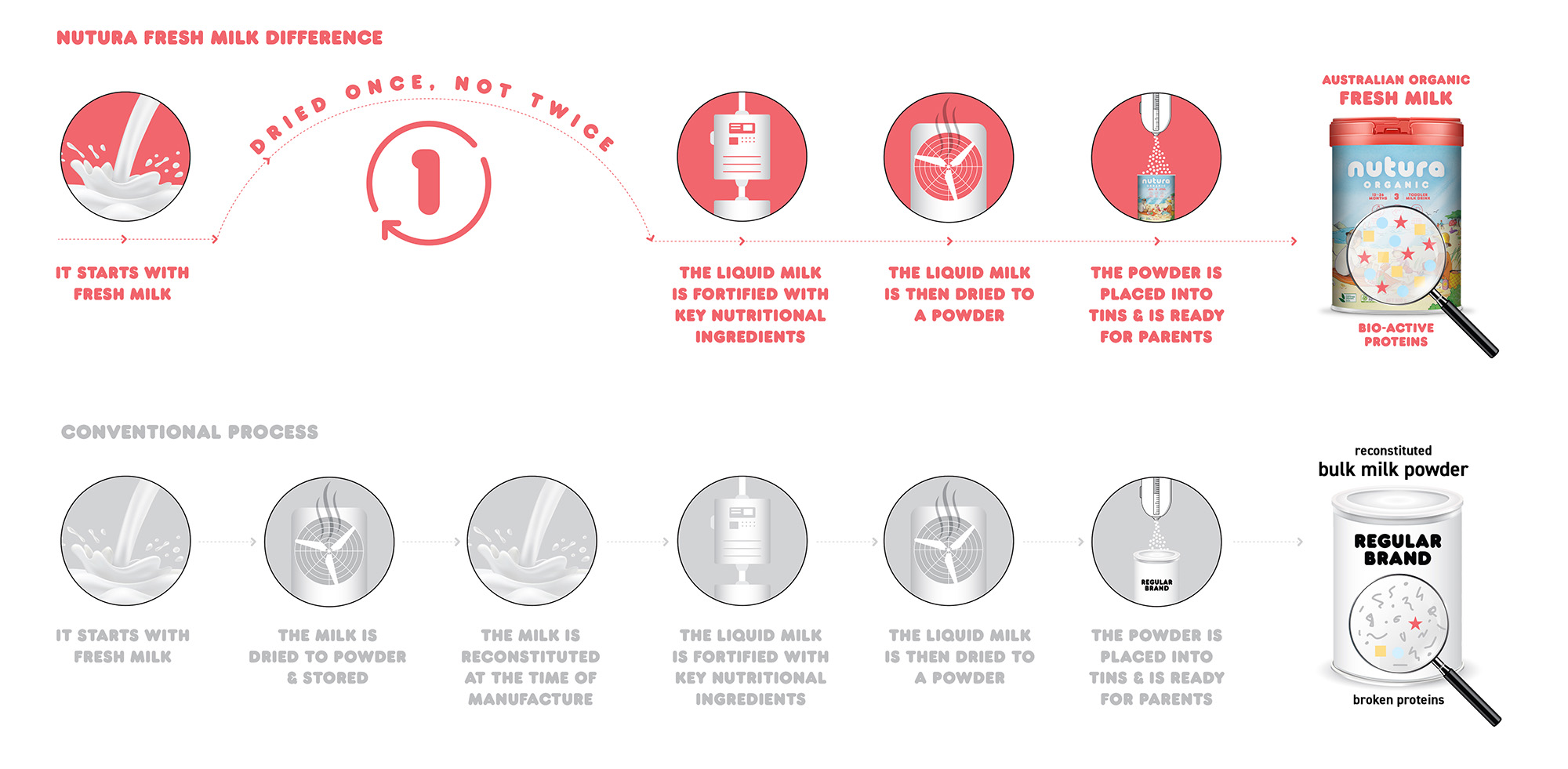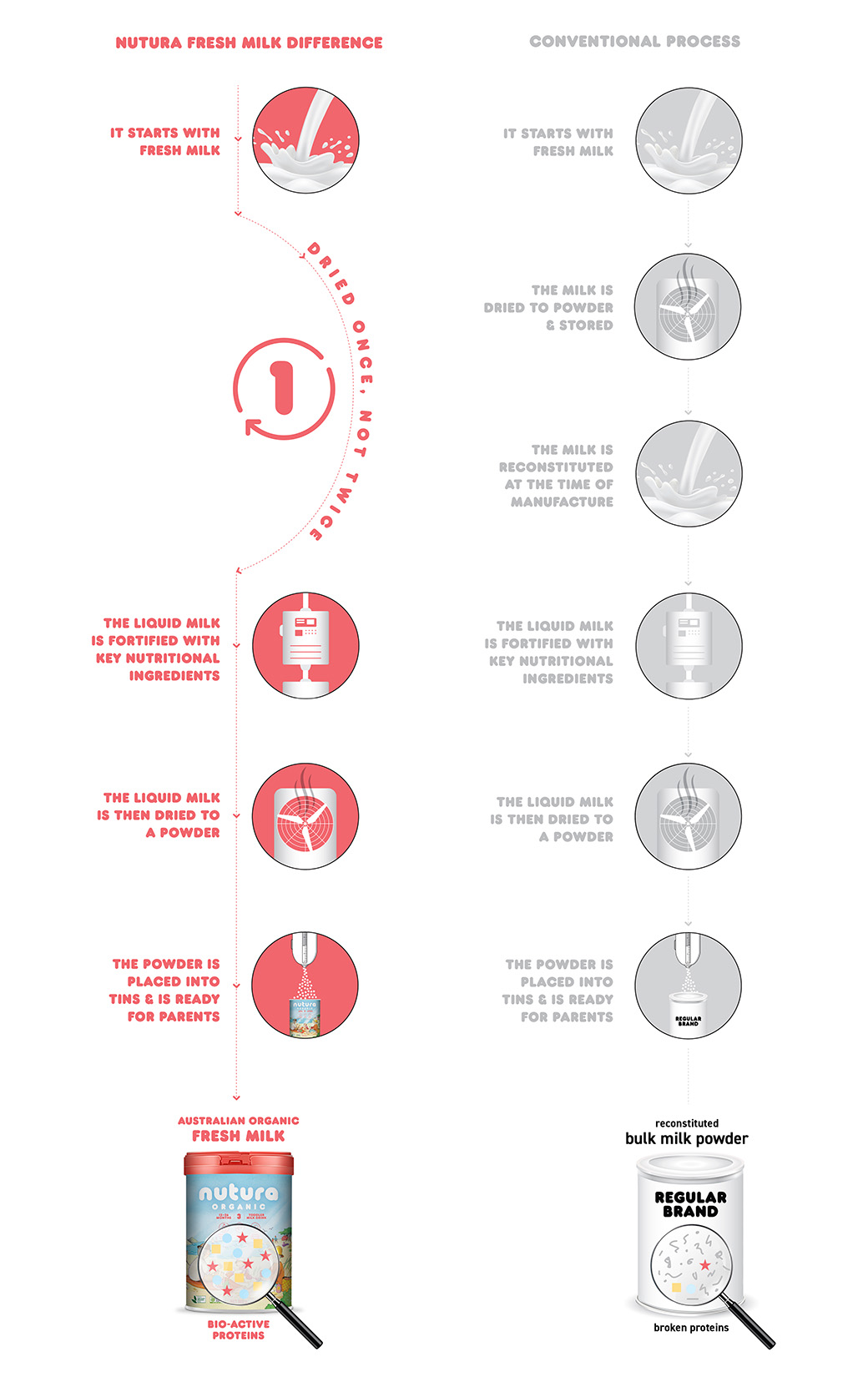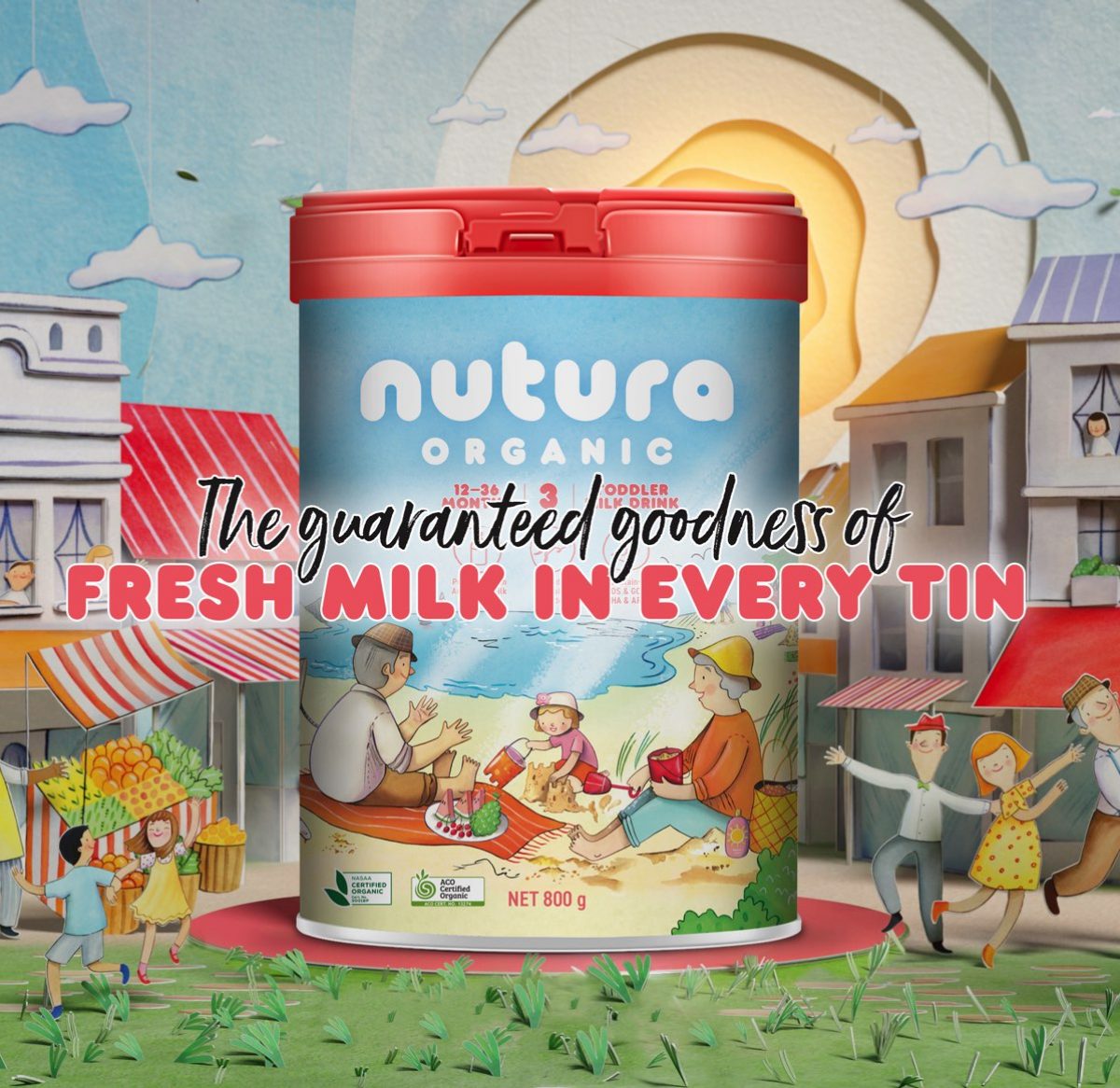The Nutura

The Premium Australian, Organic, fresh milk formulation that leaves the goodness in!

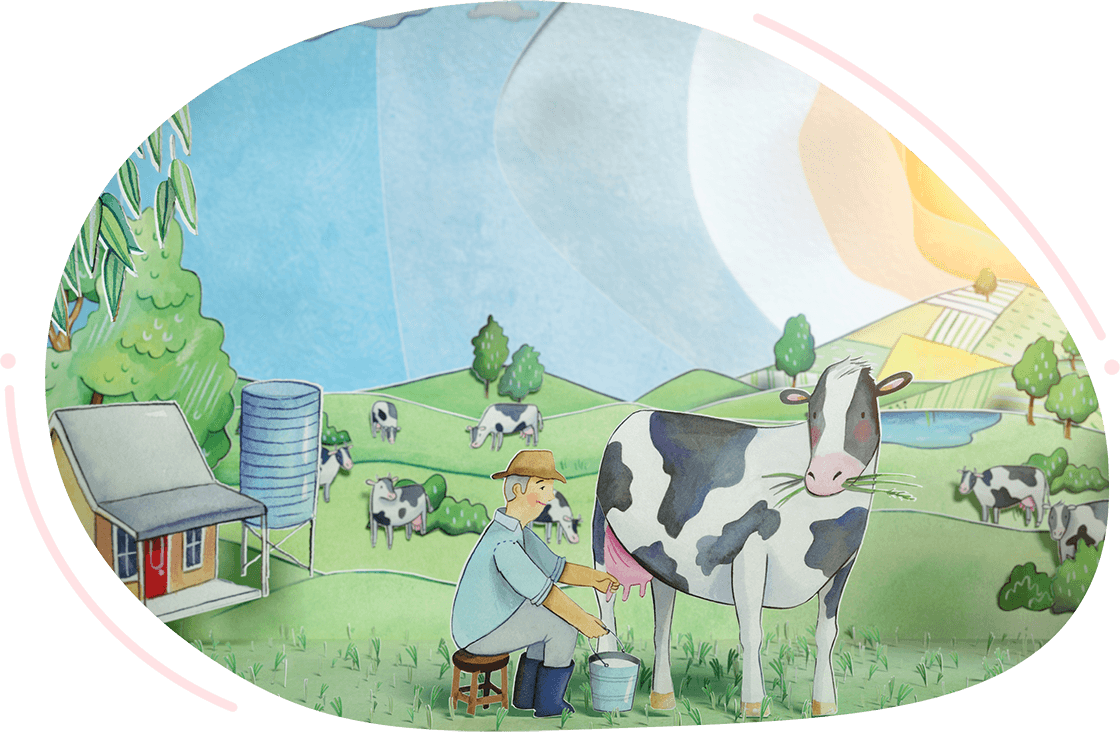
![]()
![]()
It all starts with trusted Australian farmers and the fresh milk sourced from their organic, grass-fed cows. The highest quality milk in the world, certified free from nasties.


![]()
![]()
The Nutura fresh Australian milk formulation has a fresh milk base, not reconstituted milk like most conventional formulations. This means it retains more of the natural goodness of fresh milk for your little one.


![]()
![]()
Nutura’s fresh milk formula helps preserve bioactive proteins, including Lactoferrin and IgG. Together with Vitamin C, Zinc and Iron, Nutura’s fresh milk formula is full of immunity Boosting goodness that helps little ones thrive.

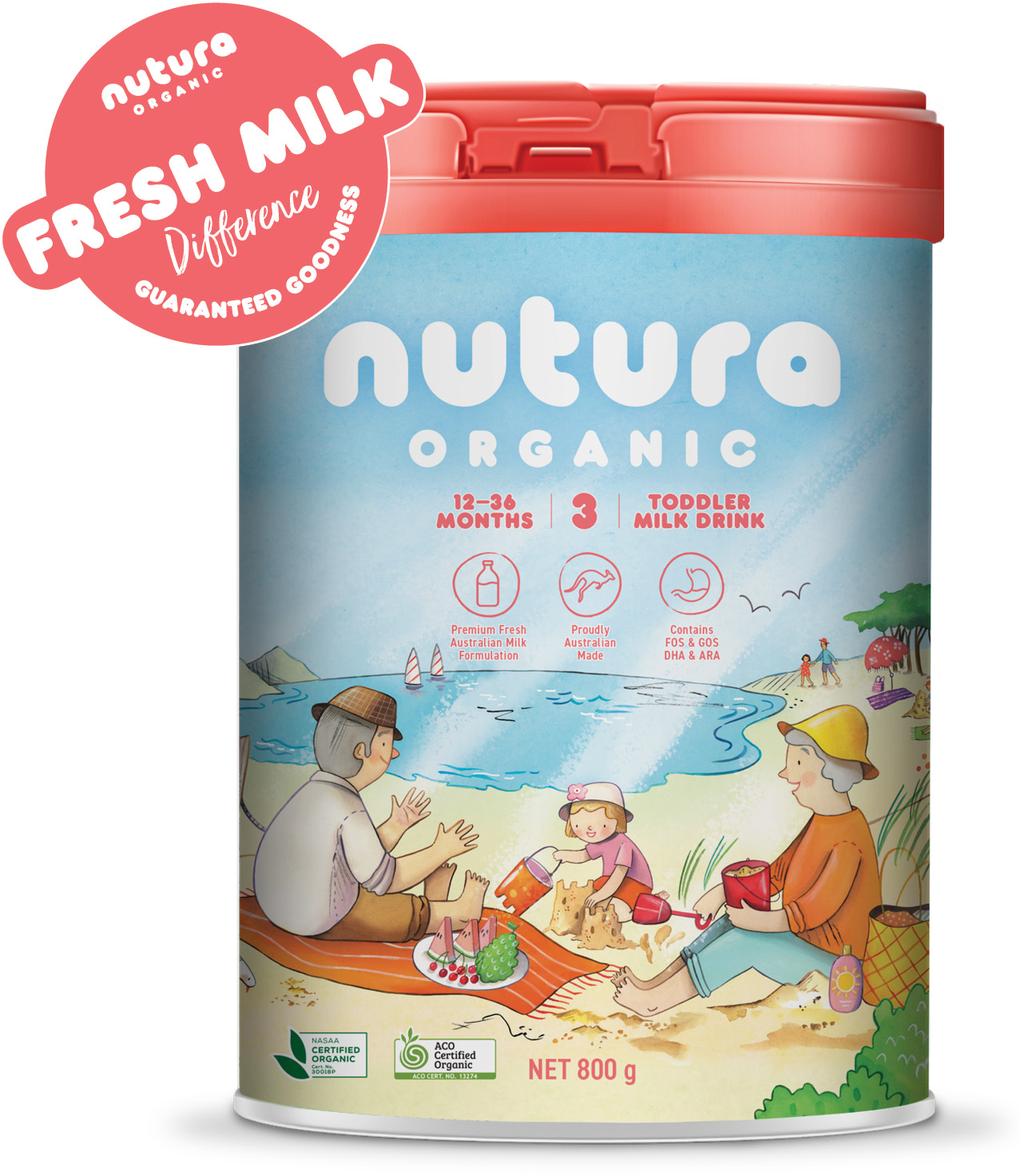
Naturally retained bioactive proteins
Nutura Organic has independent data which supports the position that the ‘Nutura Fresh Milk’ process retains more biologically-active proteins than a conventional infant formula manufacturing process.
The analysis was performed by The Australian Proteome Analysis Facility (APAF), Macquarie University.
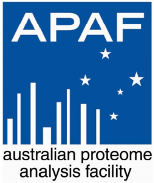

Lactoferrin
Lactoferrin is found in both human mother’s and cow’s milk, and critical to protecting newborn infants from infection
Lactoferrin is an iron-binding, multifunctional glycoprotein found in mother’s milk, and the milk of other mammals. The concentration in the first milk produced after childbirth, colostrum, is very high (7-9 g/L) which falls to about 1-3 g/L in the later human milk. This observation is consistent with the primary biological role of lactoferrin – to protect the newborn child from infection, and to help promote healthy growth.
Lactoferrin is found in cows’ milk at lower concentrations. Bovine and human lactoferrin are structurally and biochemically similar, and have comparable bioactivity according to in vitro and animal model assessments.
Three features are central to lactoferrin’s biological functions:
1. the protein binds to, and transports, iron
2. the protein molecule’s surface is positively charged which allows it to disrupt microbial cells and attach to certain biological surfaces
3. the human body, particularly surfaces of the GI tract, possesses “lactoferrin receptors” and signalling takes place here [explanation: when the milk-derived lactoferrin touches the receptor, its like turning on a switch]
Lactoferrin possesses a range of biological activities that are important to human health.
Protection against infection – Lactoferrin has anti-microbial and anti-viral action.
Immuno-modulatory and anti-inflammatory – The protein interacts with the immune system, particularly at mucosal surfaces (e.g. promotes cytokine production).
Nutritional – Lactoferrin oral administration has been proven to increase iron absorption in infants and adults. The protein can enhance bone growth and healing of the skin.
Studies to support clinical use of lactoferrin are still few, and more is being done. Oral dose levels for efficacy appear to be around 20 to 100 mg/day in children. While dose quantities below this range may be sub-therapeutic, some health benefit may still be experienced.
Immunoglobulins (IgGs)
Immunoglobulins, also known as antibodies, are an important part of the immune defence system. Milk also contains immunoglobulins, and these contribute to illness prevention in newborns and infants
Immunoglobulins are protein molecules produced by white blood cells. They act as a critical part of the immune response by specifically recognizing and binding to particular antigens, such as bacteria or viruses, and aiding in their destruction.
Immunoglobulins are also produced in mothers’ breast milk.
They are very large complex molecules composed of “heavy” chains and “light” chains and comprising about 1400 amino acids. There are several classes of IGs, including IgG, IgA and IgE. IgG is the largest group (in concentration) and most important in mammalian immunity.
Immunoglobulins are produced in the body in response to infection (antigens). As there are more than 1 million antigens (bacteria, fungi, virus, proteins, allergens…) there are an equally large number of IGs that can be synthesized by the human body.
